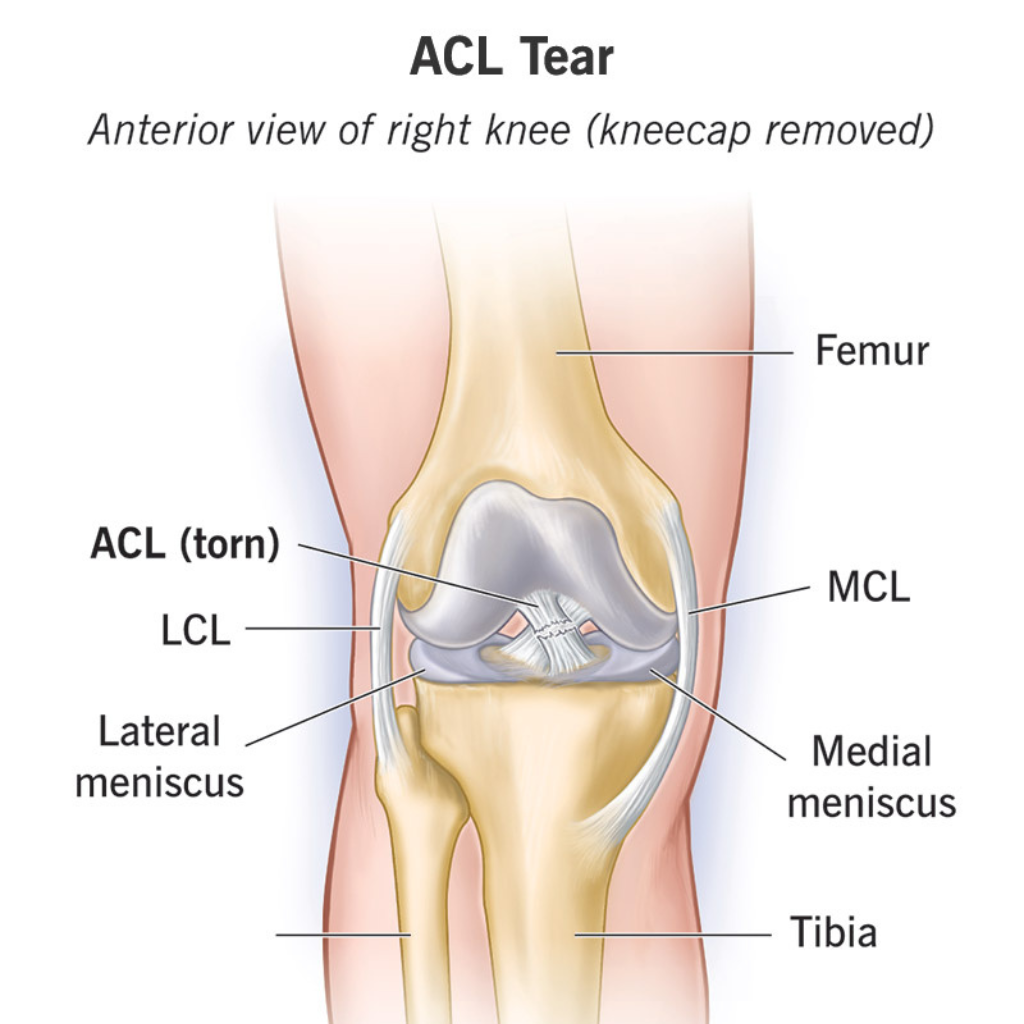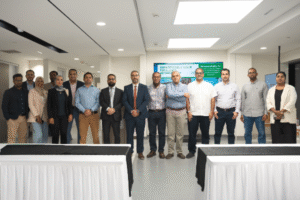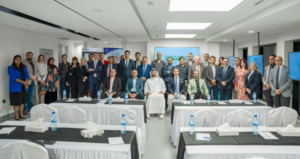ACL Tears in Athletes: Diagnosis, Treatment, and Recovery

Athletes constantly push their bodies to perform their best—but with high performance comes a higher risk of injury.
Among the most common and challenging of these is an ACL tear. The Anterior Cruciate Ligament (ACL) is important for knee stability, and damage to it can bring even the most seasoned athletes to a halt.
In this blog, we’ll explore the diagnosis, treatment, and recovery journey for ACL tears in athletes, along with key strategies for injury prevention.
Understanding ACL Tears
ACL is a small but cruciate stabilizing crucial knee ligament, which connects the thigh bone (femur) to the shinbone (tibia). It is essential for movements that involve sudden stops, pivots, jumps, or quick directional changes.
ACL tears are one of the most common knee injuries in athletes, particularly in sports like basketball, soccer, football, and skiing.
About
Tarabichi Joint Care
At Tarabichi Joint Care, we are dedicated to offering world-class orthopedic care with a focus on joint health and comprehensive rehabilitation. Founded by the renowned Dr. Samih Tarabichi, a pioneer in joint replacement in Dubai, our center stands as a beacon of excellence in the Middle East and beyond. With cutting-edge technologies, a patient-centered approach, and a team of highly specialized professionals, we strive to enhance the quality of life for individuals suffering from joint-related conditions.
Symptoms of an ACL Tear
The signs of an ACL tear can vary, but they often include:
- A sudden loud “pop” or “snap” sound at the time of injury
- Immediate swelling and knee instability
- Limited range of motion
- Unstable feeling in the knee
- Sharp pain that makes it hard to walk or bear weight
- Buckling when trying to pivot or change direction
Causes of ACL Tears in Athletes
ACL tears are common among athletes, especially in sports that involve rapid movements, jumping, and physical contact.
The main causes include:
- Sudden stops or direction changes – Quick pivots, sharp turns, and abrupt halts (common in soccer, basketball, and tennis) put immense stress on the ACL.
- Jumping and incorrect landings – High-impact sports or imbalance when coming down from a jump increases the strain on the ACL.
- Direct impact or collisions – Contact sports like football, rugby, and martial arts can cause excessive force on the knee.
- Weak muscle support – An imbalance between the quadriceps and hamstrings can lead to imbalances and ACL vulnerability.
- Overuse – Repetitive strain on the knee without proper rest can wear down the ligament.
- Genetics and anatomy – Female athletes have a higher risk due to anatomical differences like a wider pelvis and a greater Q-angle, which affects knee stability.
Effects of an ACL Tear on Athletes
An ACL injury can be more than just a temporary setback. It often affects an athlete’s physical, emotional, and even professional life:
- Extended recovery time – Full recovery after surgery can take 6–12 months.
- Meniscus tears – ACL injuries often occur alongside meniscus damage, further compromising knee function and accelerating joint wear and tear.
- Knee instability – Without proper healing, the knee may remain unstable during movement.
- Increased risk of reinjury – Studies suggest a higher risk of tearing the ACL again, especially in younger athletes.
- Psychological impact – Fear of reinjury can affect confidence and return-to-play decisions.
- Early onset arthritis – ACL tears can contribute to joint degeneration and the development of knee osteoarthritis later in life.
Diagnosing ACL Tears
To diagnose an ACL tear, orthopedic surgeon Dubai employ a combination of methods:
- A physical examination – To check for signs of swelling, instability, and limited motion.
- Patient history – Understanding how the injury happened helps determine the extent of damage.
- Imaging tests—An MRI clearly shows ligament damage, and X-rays may help rule out bone fractures.

Treating ACL Tears
Non-surgical treatments
- Rest and ice – Keeping weight off the knee and applying ice packs helps reduce swelling and pain.
- Physiotherapy – A customized rehabilitation plan focused on building strength, flexibility, and stability can help restore knee function.
- Bracing – Wearing a supportive knee brace provides additional support and stability during the healing process.
Surgical treatments
- ACL reconstruction surgery – In this procedure, the torn ligament is replaced with a graft from your own body or from a donor. This is the most common and effective method to restore stability and function.
- Arthroscopic surgery – A minimally invasive procedure performed on an outpatient basis, where surgeons repair ACL through small incisions using specialized instruments.
The Road to Recovery
Rehabilitation after an ACL tear, whether treated surgically or non-surgically, is a gradual process. Recovery timelines vary, but many athletes can resume daily activities within a few weeks. However, achieving full strength and returning to competitive sports may take six months to a year.
Key points for a successful recovery include:
- Adherence to rehab: Follow your physiotherapist’s plan diligently. Consistency is key in rebuilding strength and coordination.
- Gradual return to activity: Avoid rushing back into intense exercise. Slowly reintroduce activities as your knee heals.
- Proper rest and nutrition: Giving your body time to rest and fueling it with nutrient-rich foods can significantly aid in the healing process.
- Regular follow-up appointments: Keep up with all scheduled visits to your doctor. These check-ins are essential for monitoring your progress and addressing any issues early on.
Preventing ACL Injuries
While ACL tears are common in sports, they are not entirely unavoidable. With the right prevention strategies in place, you can lower your chances of getting hurt:
- Strength training – Strengthen the quadriceps, hamstrings, and core to enhance knee stability.
- Proper arm-ups & cool-downs – Dynamic stretching before exercise and static stretching afterward to prevent strain.
- Neuromuscular training – Exercises to improve balance, coordination, and jumping/landing techniques.
- Wearing Proper Footwear – Supportive shoes reduce the risk of awkward landings.
- Avoiding overtraining – Fatigue increases the risk of poor movements and potential injuries.
- Using knee braces – Some athletes benefit from extra support, especially post-injury.
Contact Tarabichi Joint Care for ACL Tear treatment in Dubai
Understanding the impact of ACL sports injuries on both lifestyle and athletic performance, Tarabichi Joint Care – Orthopedic in Dubai provides expert care with a team of specialized orthopedic doctor Dubai.
From getting a clear diagnosis to creating a treatment and rehabilitation plan that suits your goals, we focus on what really matters—helping you recover fully and get back to doing what you love, whether it’s playing sports or simply staying active.

Get Your Appointment For Expert Joint Care
At Tarabichi Joint Care, we are dedicated to providing exceptional orthopedic treatment in Dubai. We specialize in the Enhanced Recovery Program, which emphasizes on quicker healing post-surgery. If you’re considering knee replacement surgery, let us help you on your journey to pain-free living.




